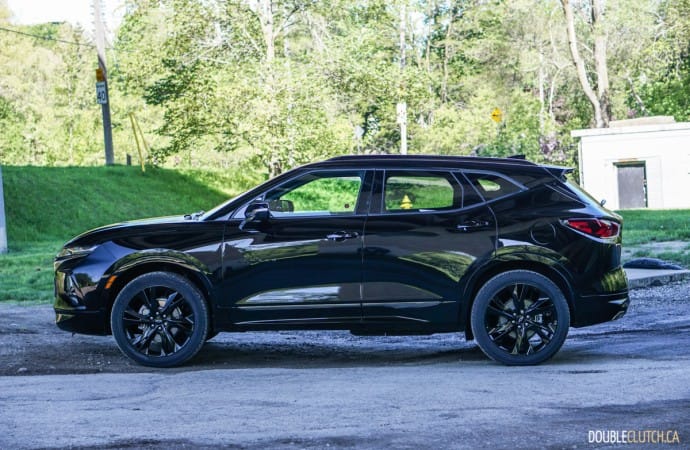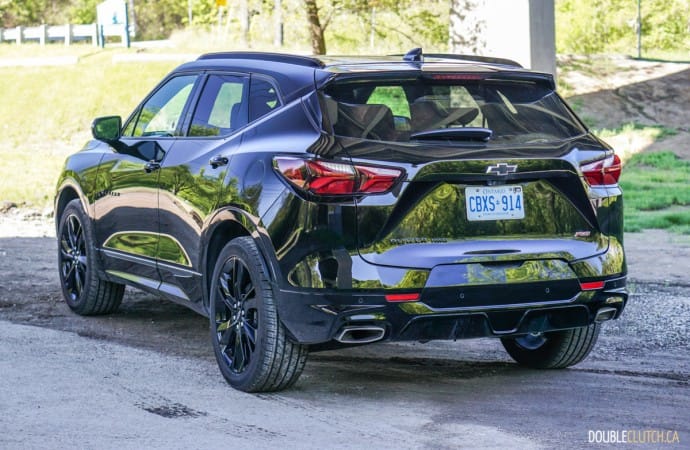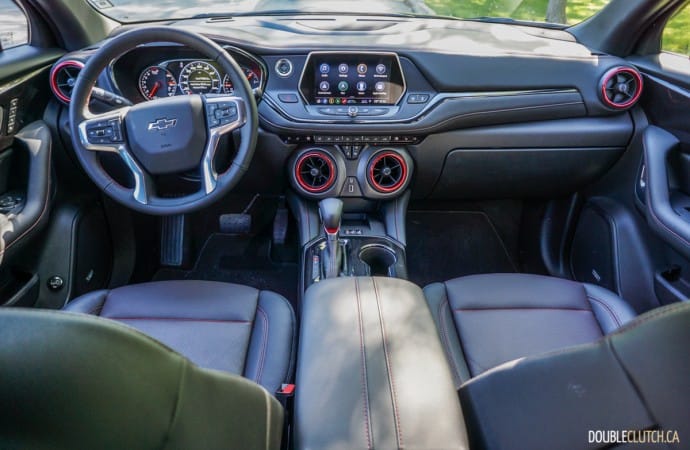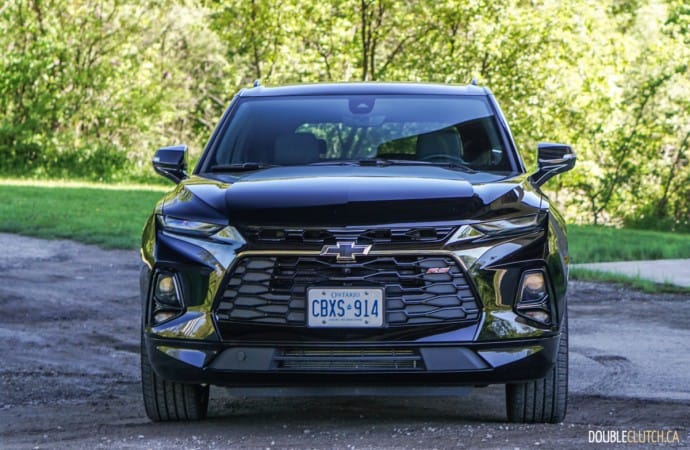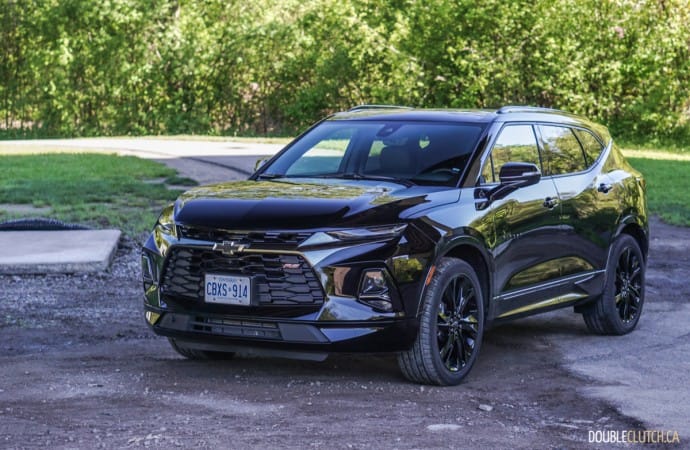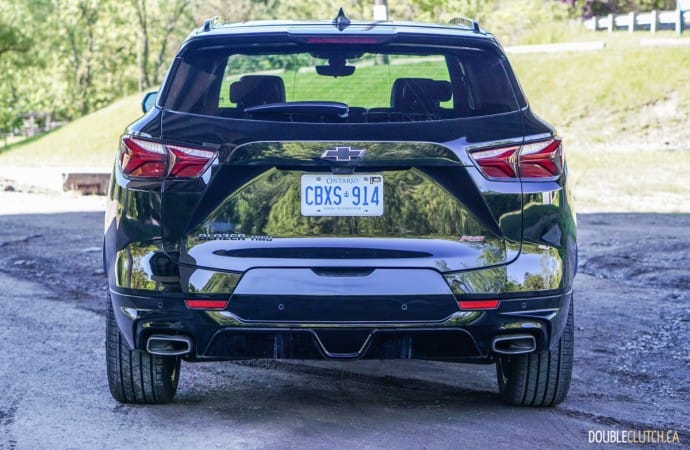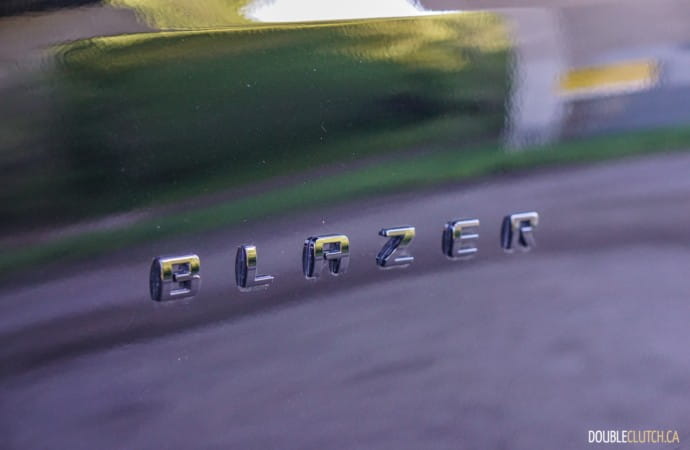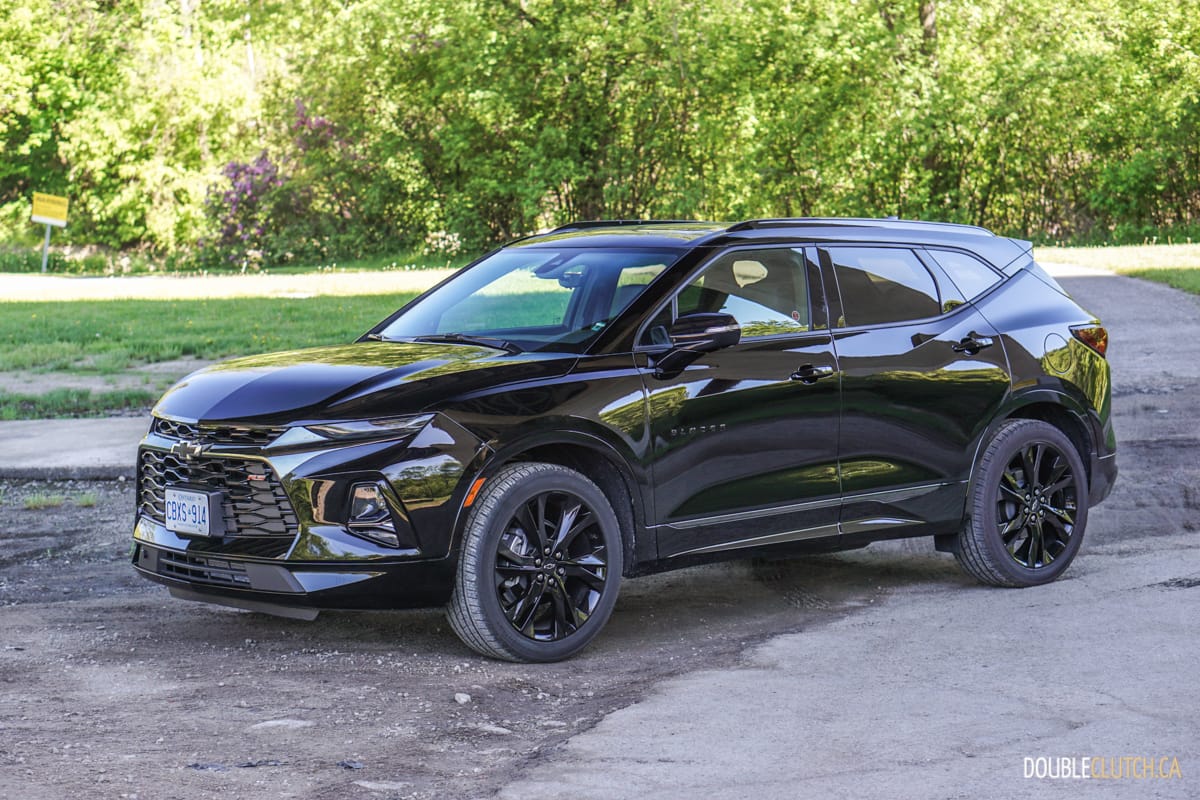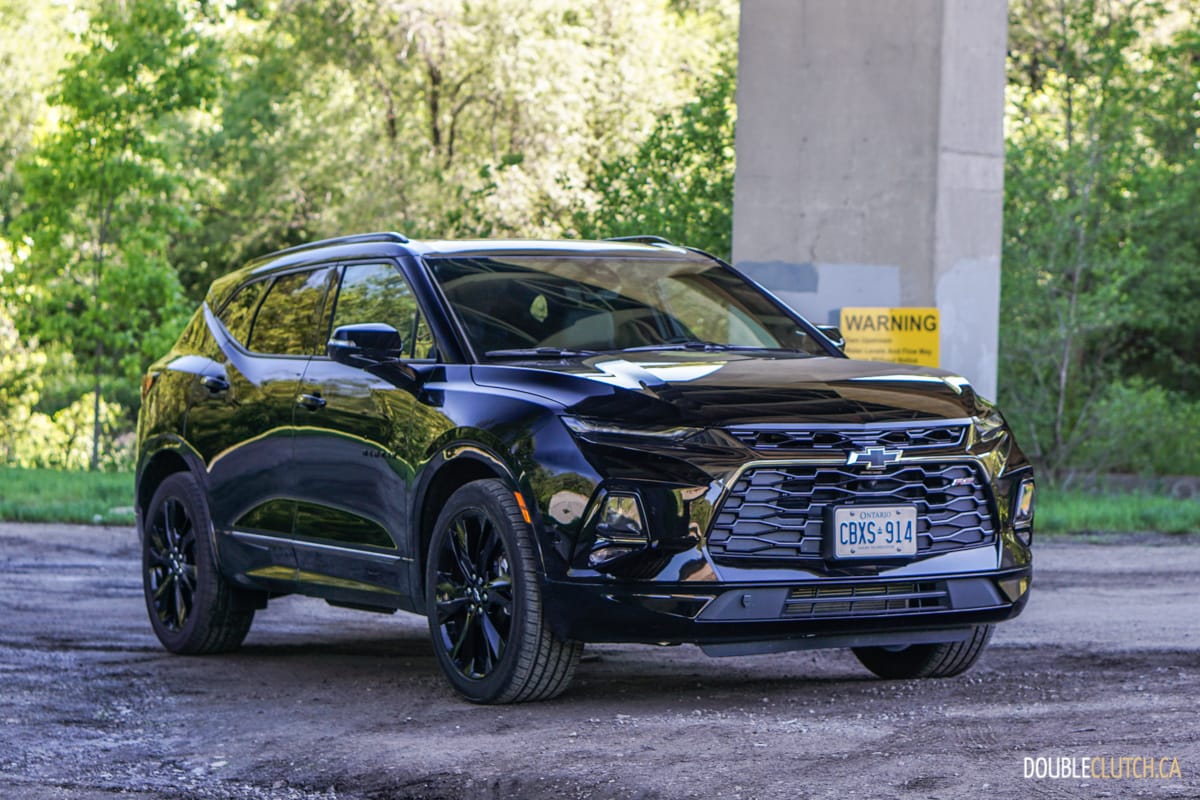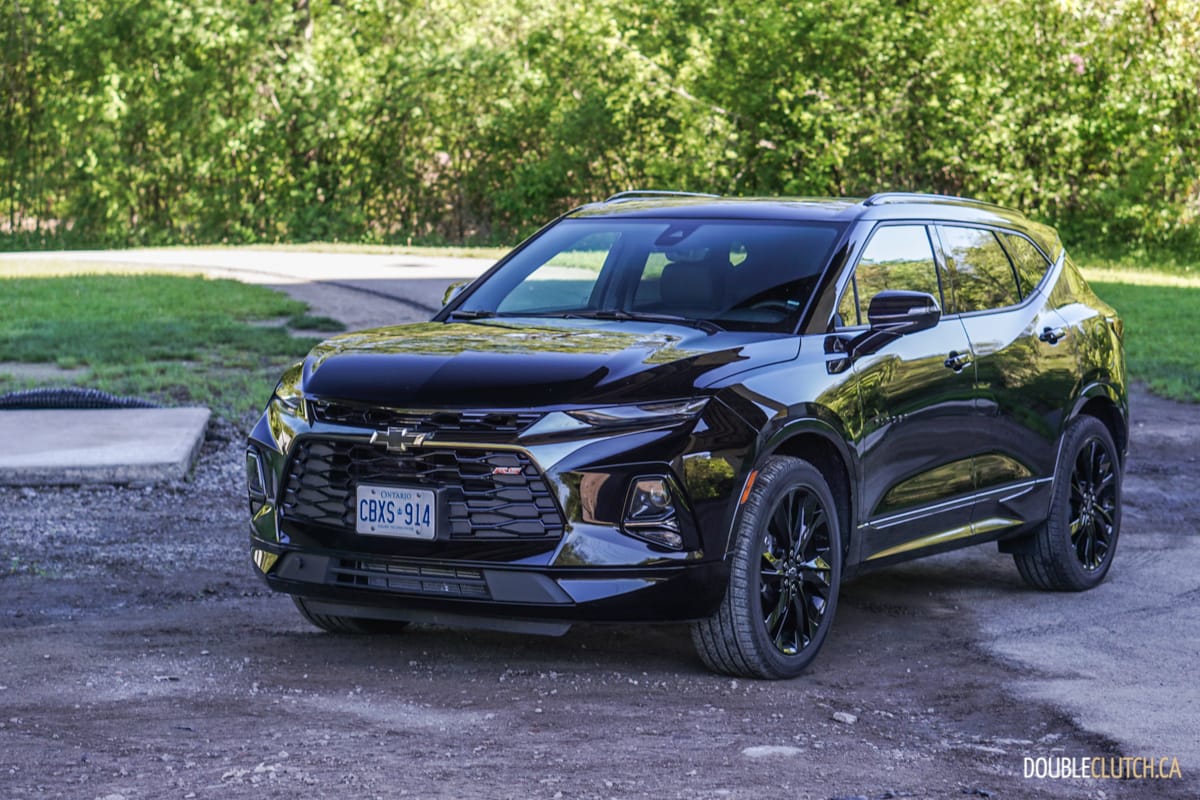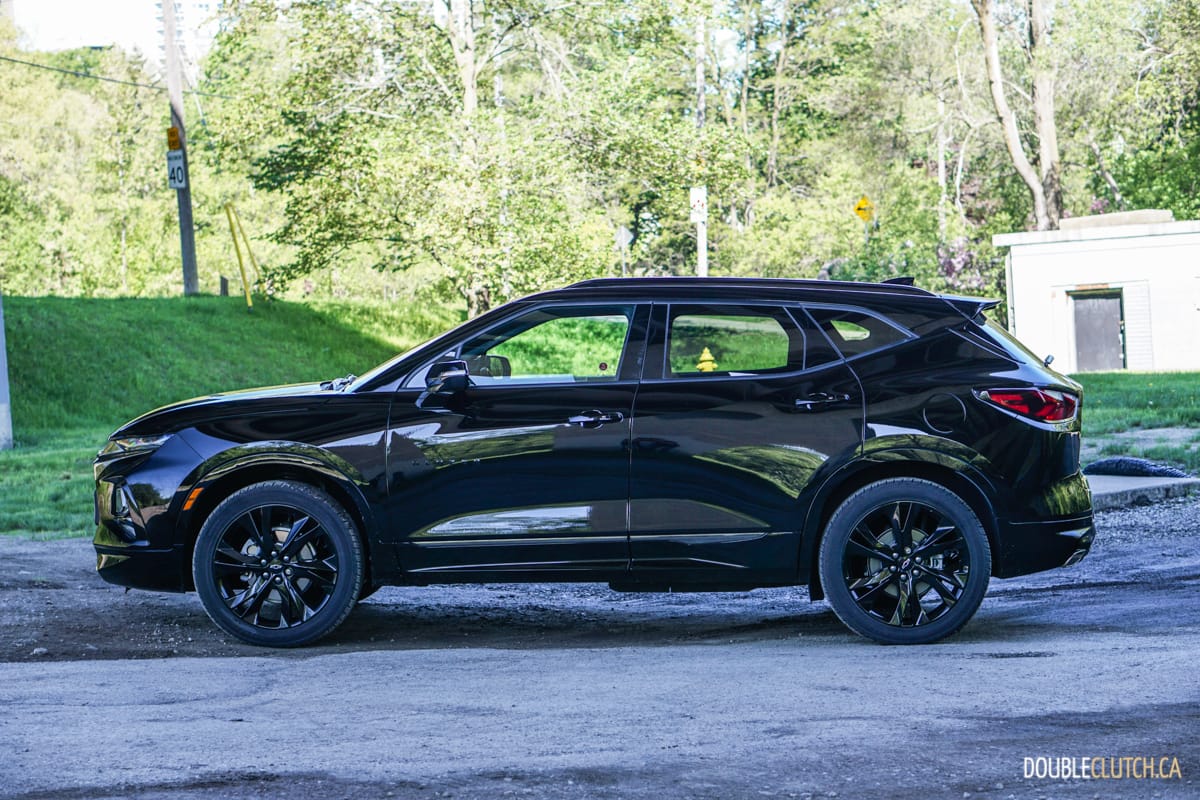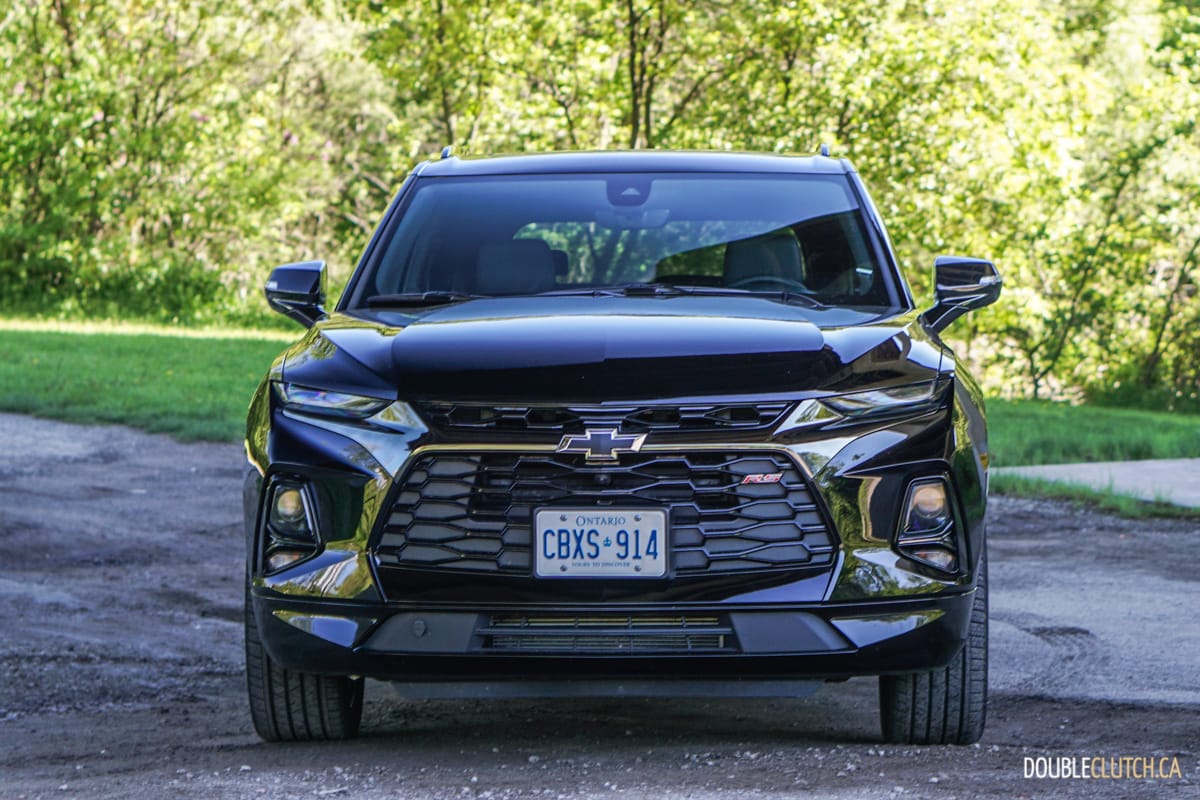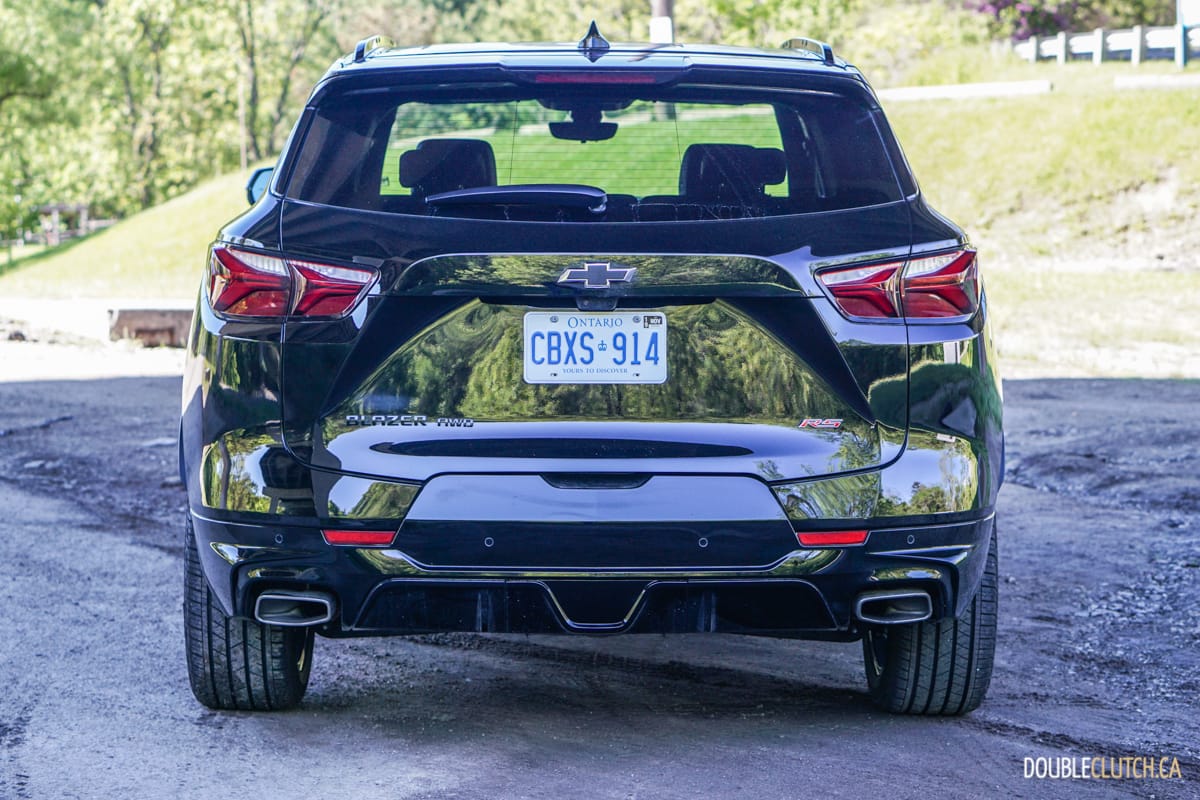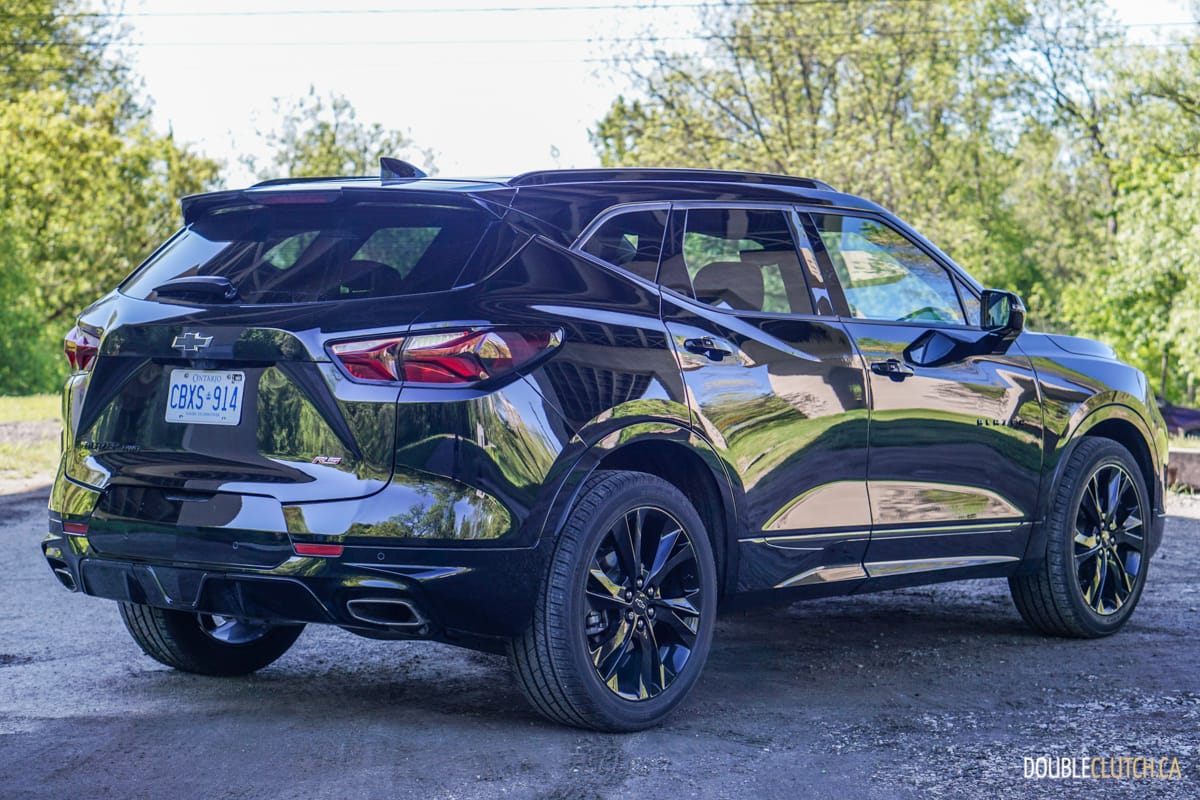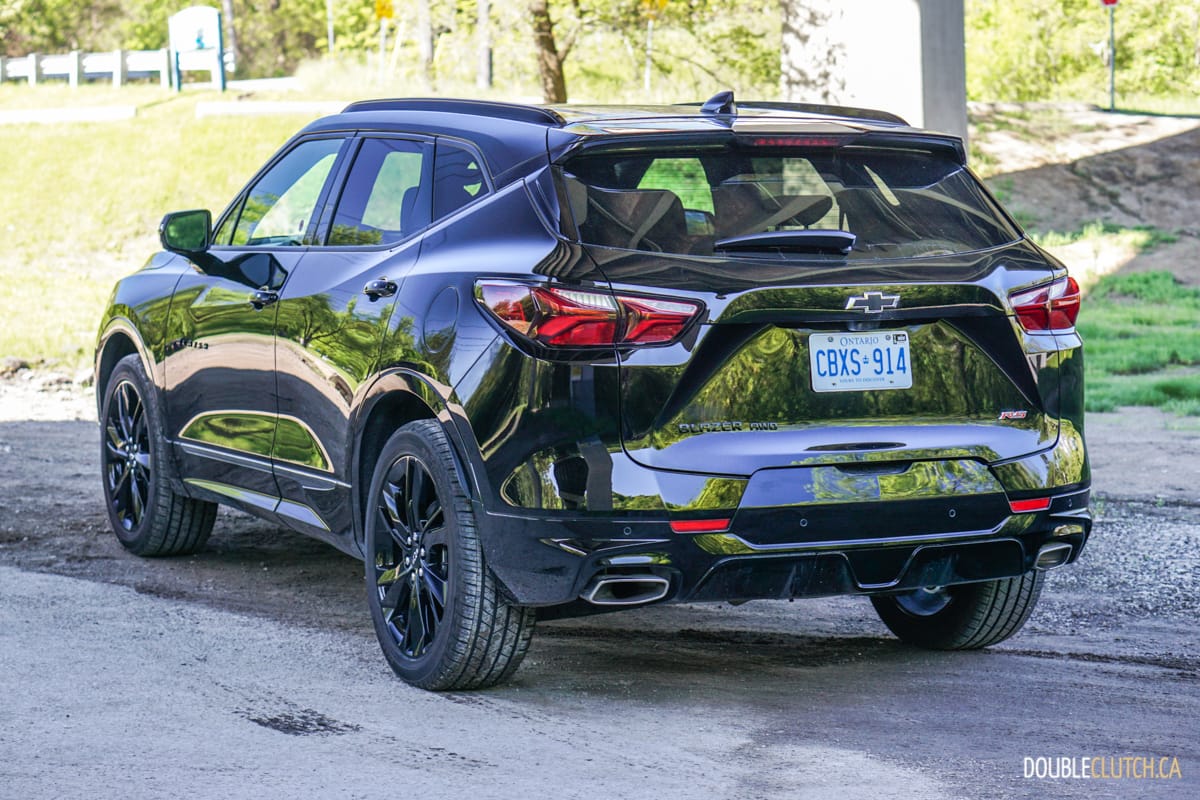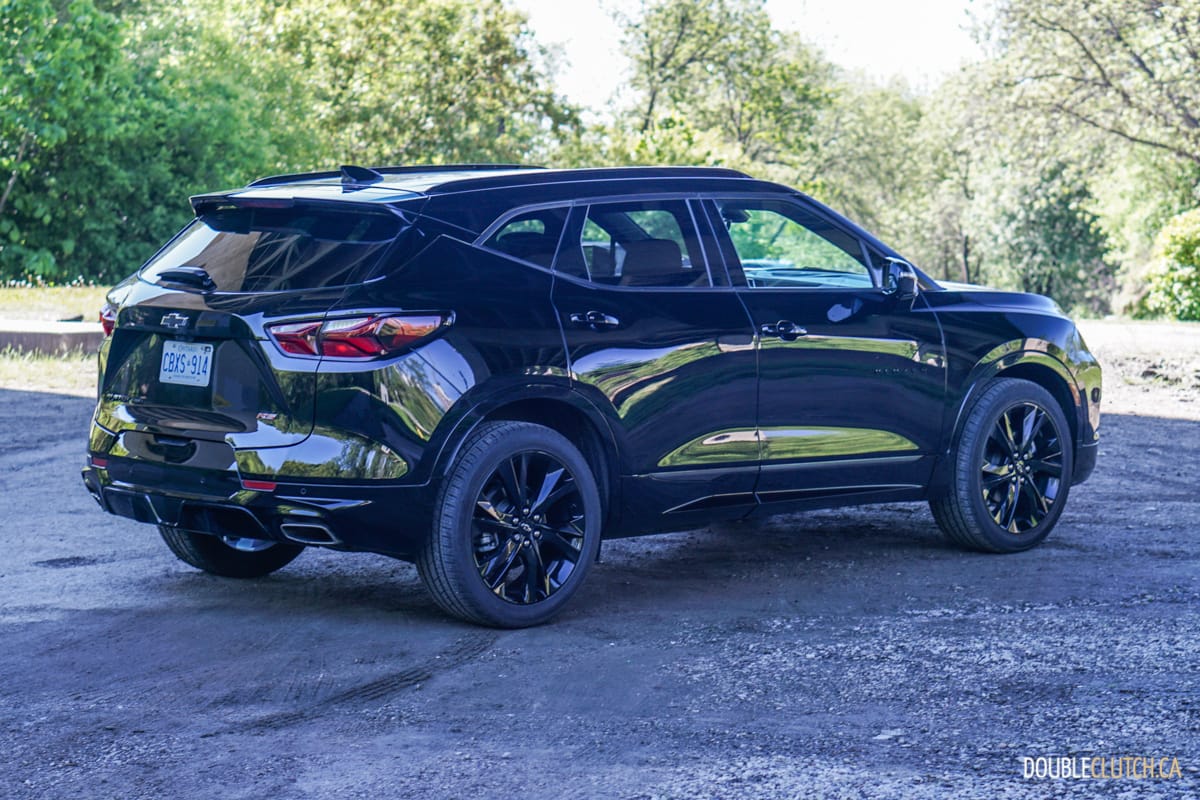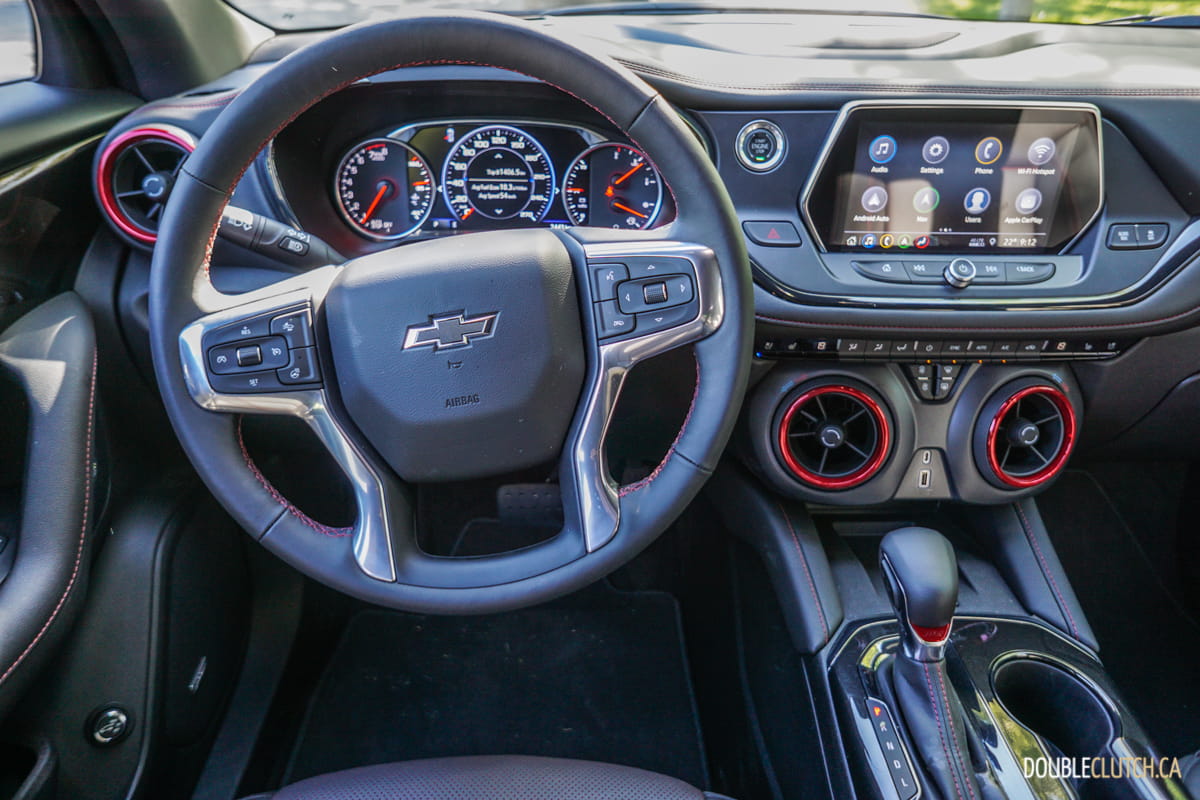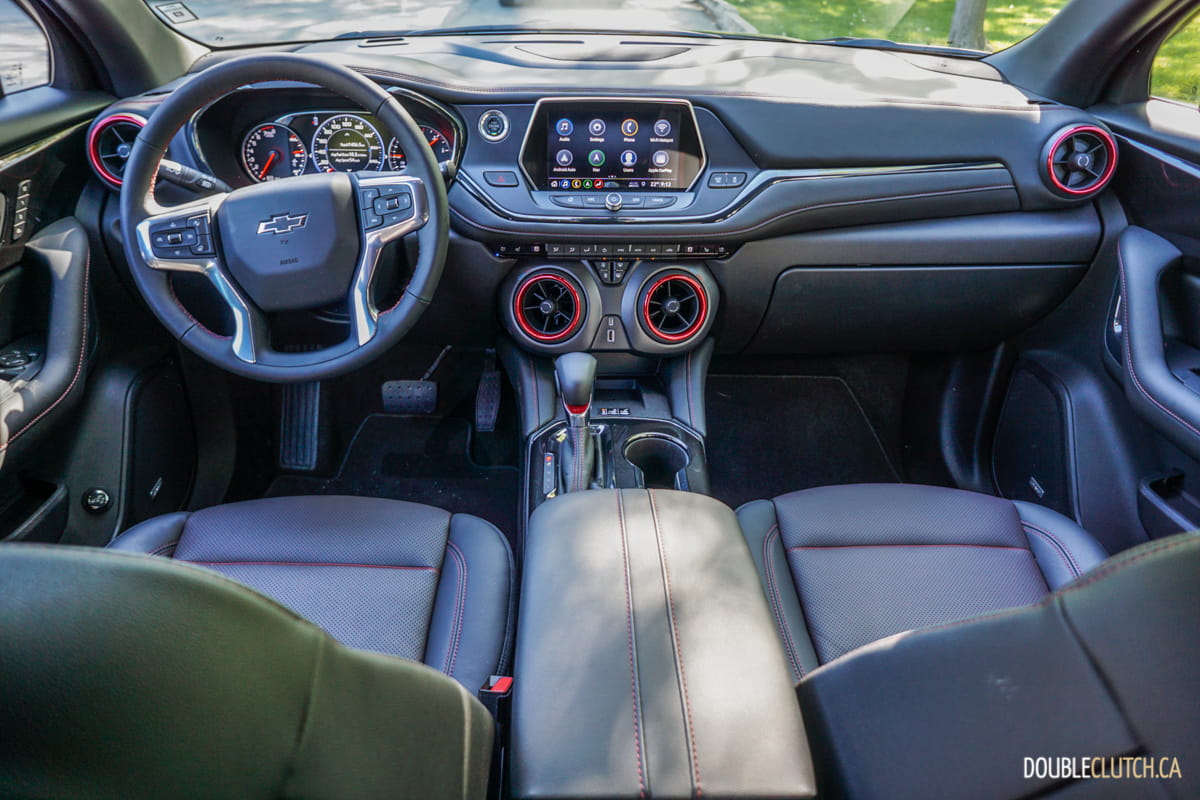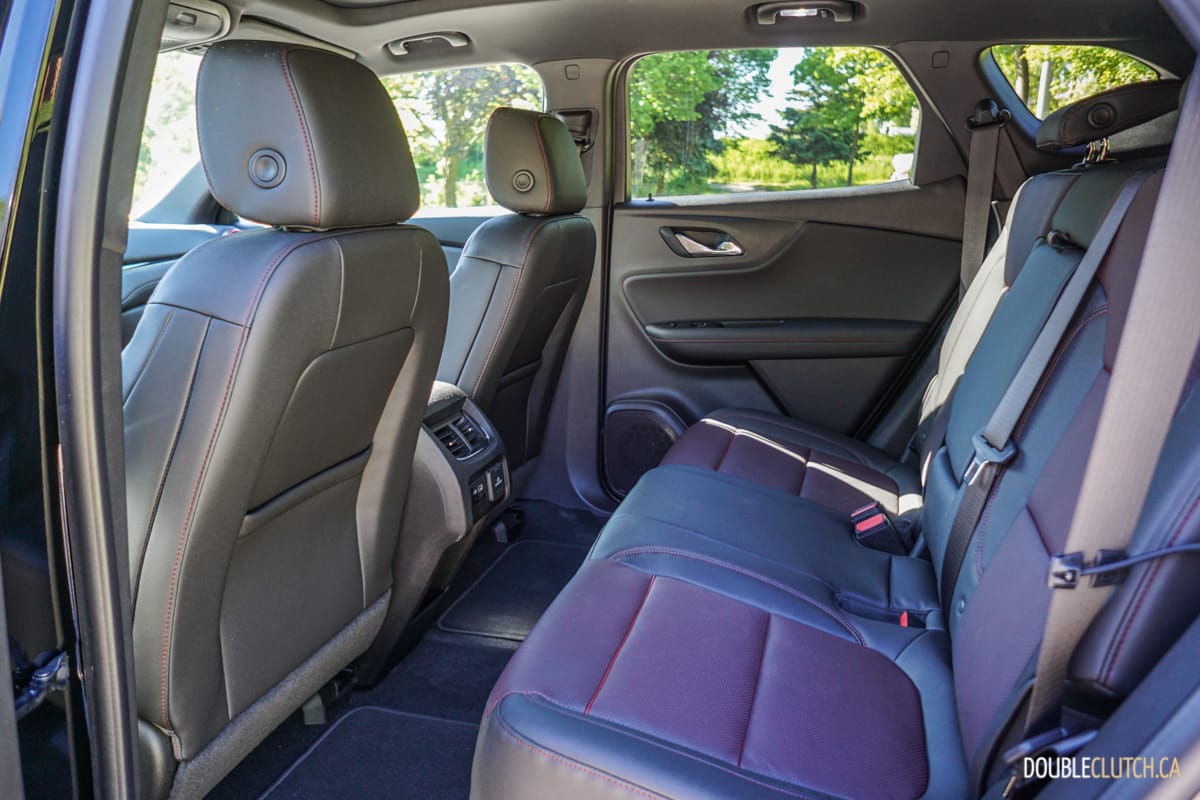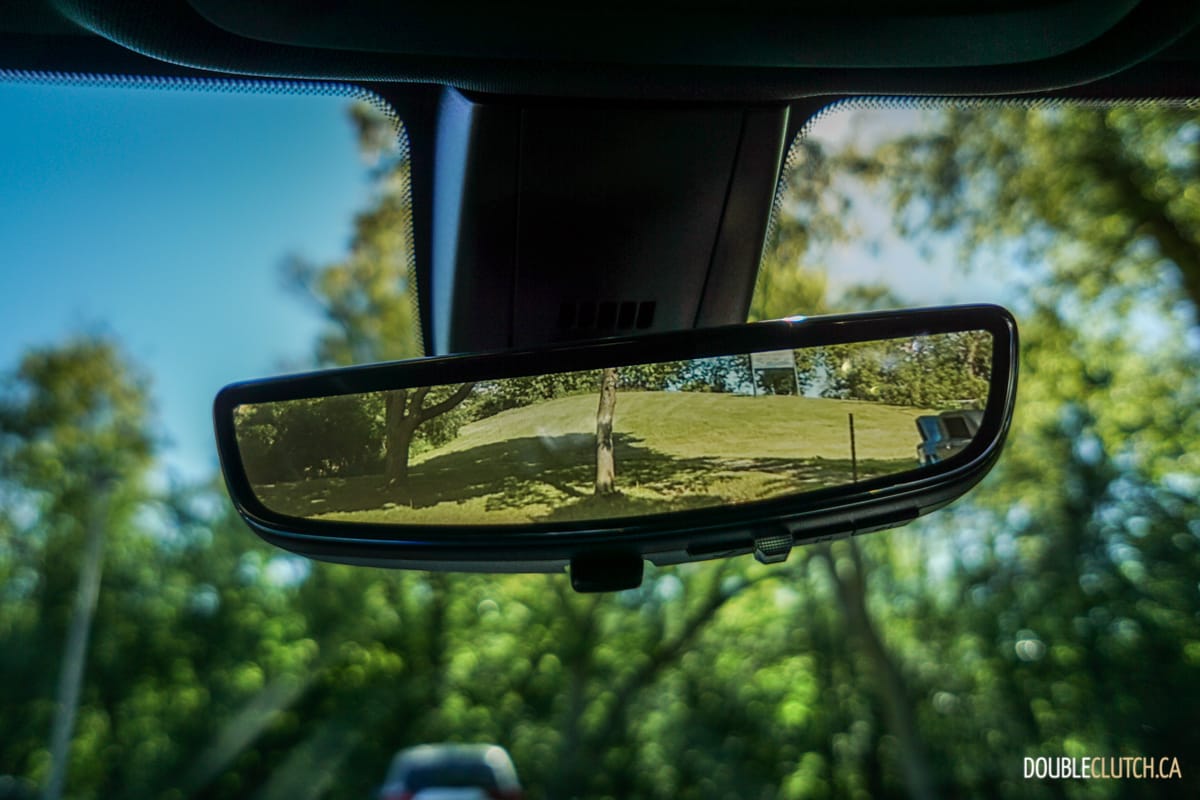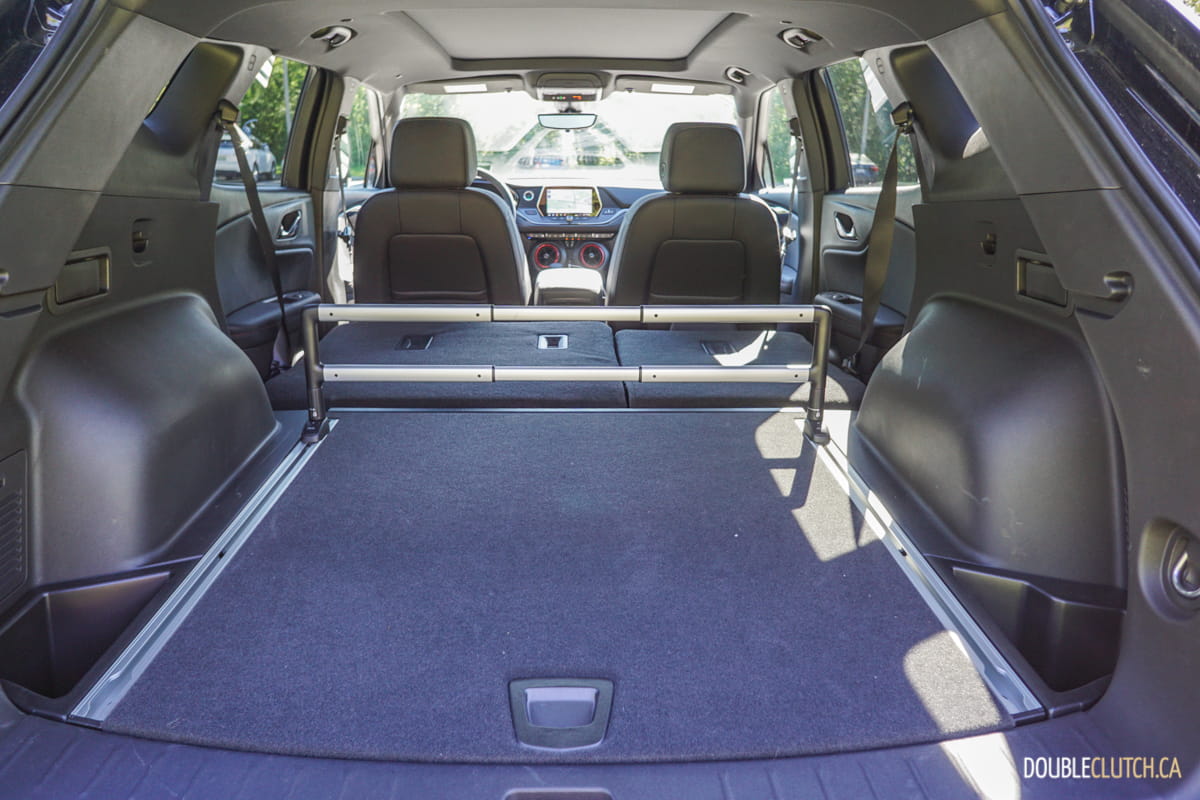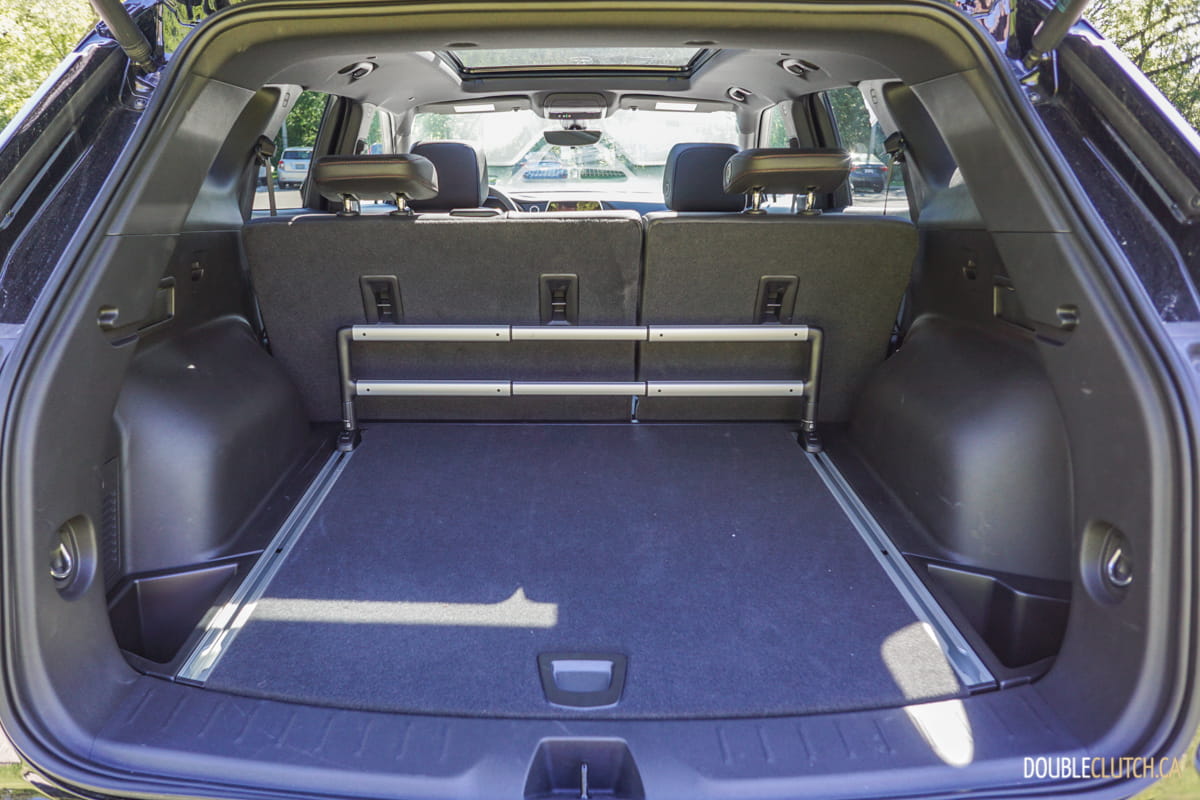This is especially the case when there’s no outgoing vehicle to provide context to the sizing, competitors and target audience. It can be even harder when the model’s name is resurrected from the past, and the new vehicle is nothing like the original. This a struggle Chevrolet has chosen to undergo with the launch of the 2019 Blazer, a nameplate that hasn’t been seen in Canada since 2005.
Historically based on Chevrolet’s compact truck platform, available in two door and four door configurations, and unapologetically truck-like, the Blazer of the past was a versatile workhorse. The 2019 Chevrolet Blazer RS tested here comes with a different lineage, not heralding to the Chevrolet Colorado crowd, but instead the styling appeals to the Camaro (reviewed here) crowd that is at the stage in life where they really need more doors and added practicality.
During the test week, we caught several people staring at the Blazer with some want in their eyes, and even had one friend who has absolutely no interest in cars point out that it looked like the SUV version of a Camaro. It does look good, aggressive, and ready to hit the open road. No matter where you park it or drive it, and whether looking at the outside or the interior, the new Blazer has an air about it that evokes emotion from everyone.
Slotted right in between the Equinox and the Traverse (reviewed here), the Blazer is a roomy two-row mid-sized crossover that doesn’t compromise on leg room or cargo room. We took the Blazer to Montreal for a weekend road trip with four tall adults and lots of gear, and there was room to spare. The second row seats slide forward and back, allowing for more cargo or legroom, depending on your needs. Even with the seats fully slid backwards, space in the cargo area is fantastic. Cupholders and storage pockets are everywhere you look, and the trunk has a floor-mounted cargo management system that is perfect for keeping things from sliding around.
Since this is a new vehicle design from the ground up, Chevrolet was able to put in most of the modern tech you find in cars these days, depending on the trim level you choose. For example, the Chevrolet Infotainment 3 system is housed in a nice tablet-style eight-inch touchscreen on the dashboard, and has full Android Auto and Apple CarPlay integration, as well as a 4G WiFi hotspot.
The screen also doubles as a display for the surround view parking cameras and has different view settings available. These really do come in handy when towing or parking in tight spaces. Up front for the driver, RS and Premier trim models come with a great eight-inch screen in the gauge cluster that provides vehicle information, navigation and adaptive cruise information.
The RS trim adds a lot of black exterior and red interior visual cues as well as RS badging all around, 20” machined wheels, dual exhaust, the new cargo management system and most importantly, a twin-clutch all wheel drive system. If you want extras like memory seats, Bose stereo, a fancy camera rear view mirror, wireless phone charging, and all of the vision and driver assist safety systems including adaptive cruise control, then you will want to check off the box for the RS Plus Package.
The Blazer RS starts at an MSRP of $46,300. Opting for the RS Plus package adds another $4,395, and the Sun and Wheels package (panoramic sunroof and 21” black aluminum wheels) added another $2,795, plus the $150 block heater for those Canadian winters brings the total to an as-tested $53,490. Wondering what is missing when compared to a fully loaded Premier trim level? Once you add the RS Plus package the answer is nothing, but the RS looks more aggressive with the visual bits.
Rear heated seats for the passengers and heated and ventilated seats (part of the RS Plus package) are a welcomed touch as well. Cargo space is 1,818L with the seats folded down, and Chevrolet suggests the trunk is wide enough to put a bag of golf clubs horizontally. With all seats upright and slid backwards, cargo volume is a very usable 863L. This is decent, but less than some of the competition offers. We really appreciated the knob on the driver’s door to control the maximum height of the powered rear gate. Lots of vehicles let you program a specific height, but the feature is useless if you’re only occasionally parked somewhere that has low clearance.
Powering all-wheel-drive models of the Blazer is GM’s standard fare 3.6L V6 engine, rated for 305 horsepower at 6,600RPM and 269 lb-ft. of torque at 4,400RPM in this application. With a curb weight of 4,253 pounds, there is lots of grunt in the V6 to move the Blazer around without effort, and plenty more left for towing duties.
The 2019 Blazer RS is ready to tow, as both the RS and Premier packages come standard with the trailering package and trailer sway control system. The plethora of cameras on board are ready to help you park whatever you are pulling that’s within the respectable 4,500-pound towing capacity.
Getting power to the ground is another well known GM product, the smooth shifting nine-speed transmission found paired to the 3.6L engine in several current vehicles within their portfolio. Partnered to the powertrain is a twin-clutch all-wheel–drive system on RS and Premier models that allows for more dynamic driving performance by controlling side-to-side torque.
One area where the Blazer doesn’t necessarily shine or slouch is in fuel economy. City fuel economy is rated at an estimated 12.7L/100km, while highway driving is estimated at 9.5L/100km. Our observed fuel economy from the road trip was a decent 10.4L/100km. These numbers are relatively in line with similar sport-inspired and new-to-market competitors such as the Ford Edge ST (reviewed here) and the Honda Passport (reviewed here).
For people that don’t need a third row, but whose lifestyles require more than two doors and cargo capacity, the 2019 Chevrolet Blazer RS hits the mark. There’s no compromise on space or utility, and Chevrolet has done a fantastic job and adapting the commonplace crossover body shape into something that turns heads and generates emotion. The Blazer nameplate is back, and this time it’s going to last.
See Also:
First Drive: 2019 Chevrolet Blazer

